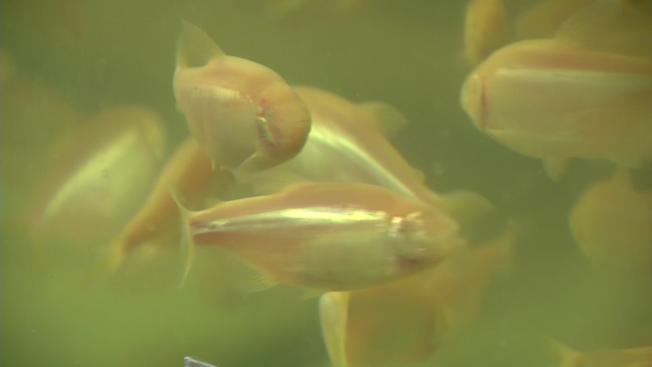
When it comes to diabetes, diet, exercise and medication can help some people avoid dangerous complications, but experts say there’s still a lot to learn. Now researchers at Harvard Medical School are looking in a very unlikely place to improve human health.
Tanks upon tanks of ordinary looking lab fish. But when you get closer …
“The cavefish has no pigment, so they’re this whitish fish, with no eyes at all,” said Misty Riddle, PhD, a Biologist at Harvard Medical School.
After millions of years swimming in dark caverns, this Mexican tetra evolved without orbs. For Harvard evolutionary and developmental biologist Misty Riddle, it’s not the strange outside that’s fascinating. It’s what’s inside.
Riddle explained, “If you dissect this fish, and even just looking at them they seem to store fat everywhere. We wondered what other type of metabolic changes there would be.”
Riddle found these cavefish had huge swings in blood glucose levels, much like people with type two diabetes. People with type two diabetes also have insulin resistance. Over time, high blood glucose levels and insulin resistance can lead to diabetes in people and serious complications.
Bhavna Desai, PhD a Postdoctoral Scientist in endocrinology and metabolism, BIDMC, at Harvard Medical School said, “Vascular damage causes heart disease and causes liver damage. Diabetic kidney disease.”
Despite the abnormal blood glucose levels, the cavefish have none of the health side effects. Researchers say understanding why the fish don’t develop complications could help them find a pathway for new drugs.
Riddle stated, “If we can learn about how that’s different maybe we can apply that to humans.”
Mysteries of the Mexican caves that could help an American health epidemic.
Riddle says the cavefish in her lab have normal life expectancies, despite having high glucose levels and insulin resistance. Many of the fish have been in the lab for up to 15 years.

